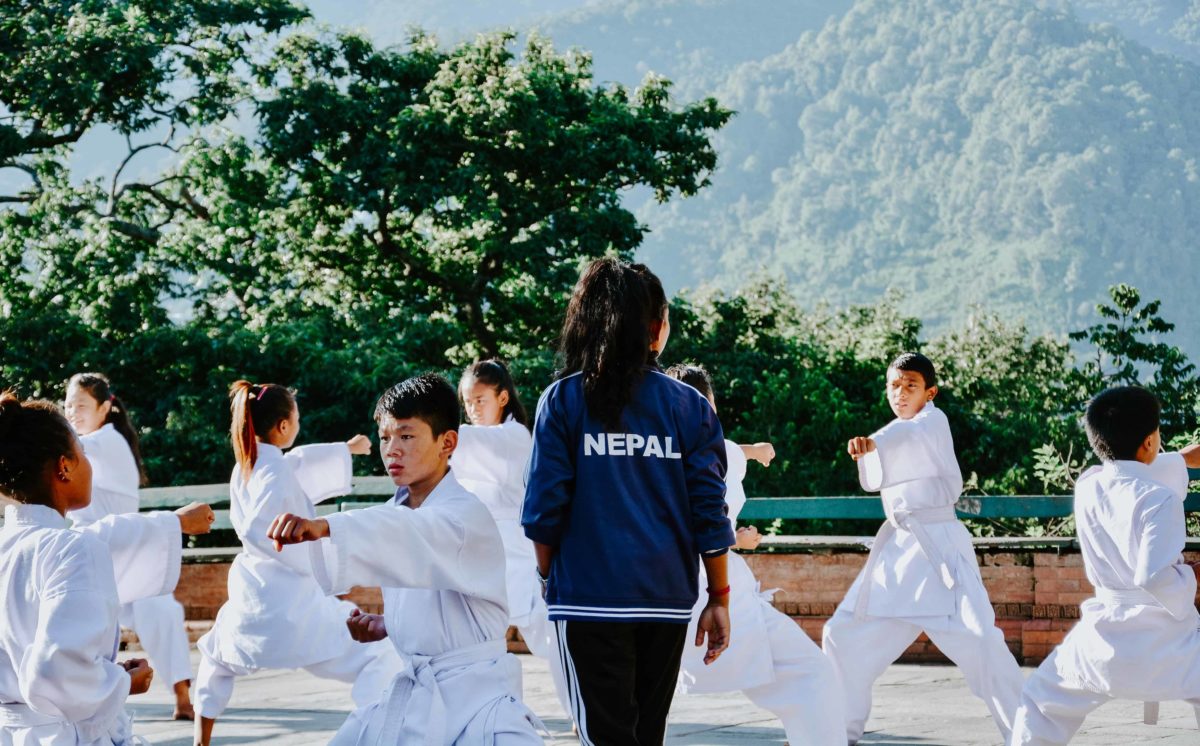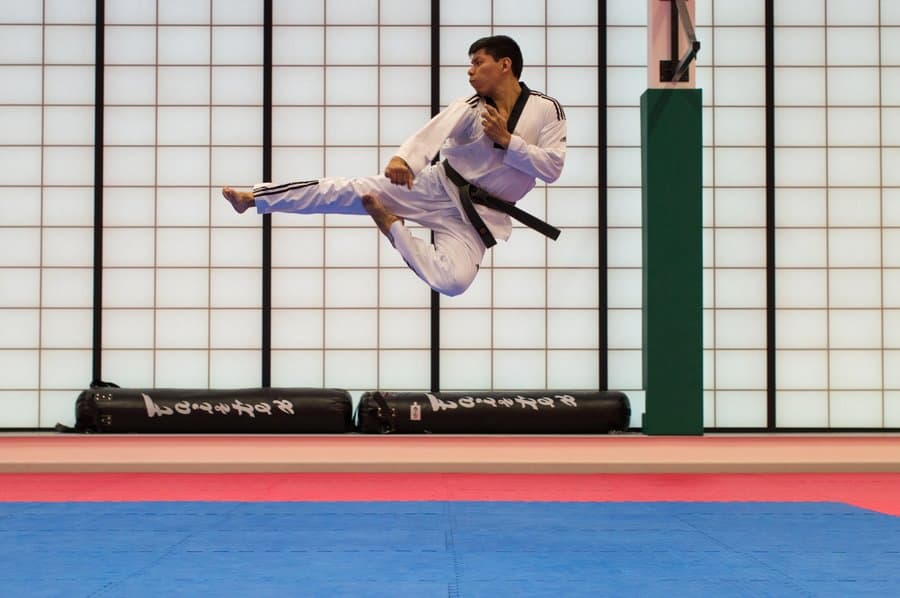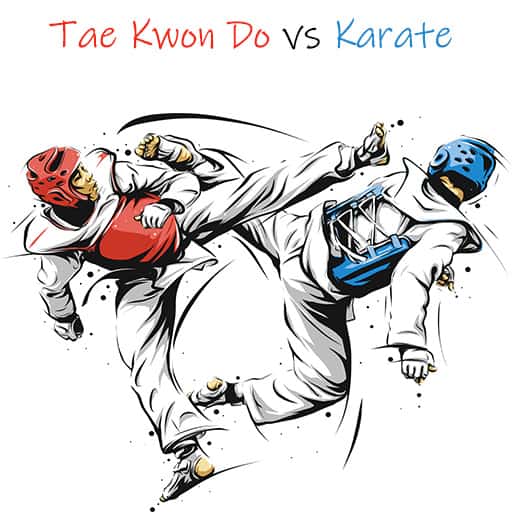When you’re deciding on a martial art to study, understanding the key differences between Taekwondo and Karate is essential. Both arts offer unique physical and mental benefits, yet they differ in origins, philosophy, techniques, and training methods. This article provides an in-depth comparison to help you determine which style best aligns with your goals.
Comparative Overview
| Category | Taekwondo | Karate |
|---|---|---|
| Historical Origins | Korean heritage; evolved from various indigenous martial arts | Okinawan roots; influenced by traditional Japanese martial practices |
| Philosophy | Emphasizes the “Do” – a lifelong journey of balance and self-improvement, incorporating concepts like Yin and Yang | Rooted in Budo; focuses on discipline, self-improvement, and perfection of both body and mind |
| Forms/Patterns | Poomsae – dynamic sequences that combine offensive and defensive techniques | Kata – traditional forms designed to perfect basic techniques and prepare for self-defense |
| Hand Techniques | Primarily focused on kicks with limited hand strikes in modern sport formats | Frequent use of punches, elbows, and other hand strikes alongside kicks |
| Kicking Techniques | High, fast, and dynamic – ideal for competition and agility | Powerful and varied; emphasizes stability, precision, and core strength |
| Weapons Training | Rarely included, except in select schools with integrated weapons modules | Often integral, especially in styles that incorporate Kobudo training |
1. Historical Origins: Korean Heritage vs. Okinawan Roots
Taekwondo
Taekwondo originated in Korea, evolving from various indigenous martial traditions. It emphasizes fast, powerful, and graceful kicking techniques while also teaching punches and blocks. Its evolution reflects a modern approach geared toward both self-defense and sport.
Karate
Karate’s origins can be traced back to Okinawa, Japan. It focuses on direct hand strikes such as punches, elbows, and knee strikes, though kicking techniques are also part of the curriculum. Karate’s development is steeped in traditional martial practices and emphasizes decisive, controlled movements.
2. Philosophical Foundations: The “Do” in Taekwondo vs. Budo in Karate
Taekwondo
The term “Taekwondo” translates to “the art of foot and fist,” with “Do” indicating a path or way of life. Practitioners strive for continuous self-improvement through rigorous physical, mental, and spiritual training. Central to this philosophy is the balance of Yin and Yang, symbolizing the harmony of opposing forces and the journey to overcome ego.
Karate
Karate is deeply rooted in the concept of Budo, meaning “martial way.” The art of Karate is not only about mastering techniques but also about developing character, discipline, and mental clarity. Its philosophy encourages practitioners to empty their minds of negativity, focusing instead on self-improvement and the pursuit of perfection..
3. Forms: Poomsae vs. Kata

Before I get into the differences, let me just add that regardless of which form you practice, you must make sure you repeat them over and over and most importantly that you learn to do them correctly. This will make sure that the movements will be ingrained in your memory and will vastly improve your skills including the angles, snaps and power.
TaeKwonDo
Taekwondo Poomsae are designed to be practiced with the mindset of facing an opponent. They combine offensive and defensive techniques, each form representing a specific set of skills and having its own unique meaning. They are crucial for belt rank progression and demonstrating mastery of techniques.
Karate
A Kata in Karate contains all the basic and fundamental movements within its system. The basic function of kata is and was to teach students these exact techniques. Each technique is done in a specific manner. In Karate, the kata (the Japanese version of forms) holds all of the basic techniques of the system. These floor patterns, allow the kata to be done within confined space and has little to do with attacks from different directions.
According to present day Okinawan masters, kata represents fighting a single opponent and the development of kata allows one to practice techniques without the fear of injury to an opponent. Historically, this was important because if someone was injured, they or the family was allowed to seek revenge. (ouch!)
4. Hand Techniques
TaeKwondo
With modern day TaeKwonDo and its movement towards a more sports oriented martial art, hand movements and punches have taken even more of backseat to kicks. One of the reasons for this is because in tournaments, like the Olympics for example, it makes it difficult if not impossible to score with any type of hand technique and therefore it has tended to go away from the more traditional TaeKwonDo style which used many of the same hand styles as Karate.
Karate
On the other hand (get it?), Karate uses punches more frequently and often includes knee and elbow strikes. Karate punches include such strikes as reverse, jabbing, back fist and lunge punching. A typical and fundamental combination would go something like a thrust punch, and then a back fist followed up an elbow strike.
5. Kicking Techniques: High and Fast vs. Powerful and Varied

TaeKwonDo
Kicks in Taekwondo are meant to be fast. They are smooth, efficient and high, just what is needed for competition. The kick that is most often used for this is the roundhouse kick, however, even within Taekwondo, there are differences in the way some kicks like these are performed. The basic TaeKwonDo Kicks would include:
- Front Kick: A straight kick aimed at the opponent’s midsection or face.
- Turning Kick: A kick that rotates the body, striking with the instep or ball of the foot.
- Side Kick: A powerful kick delivered with the blade of the foot.
- Back Kick: A kick delivered backward, often used as a counterattack.
Karate
Karate kicks are often delivered with less emphasis on extreme height, focusing instead on power and precision. While high kicks are present in some styles, many Karate kicks target lower areas, emphasizing stability and generating force from the core. Karate kicks include the front kick, roundhouse kick, knee strike, and crescent kick.
- Front Kick: Similar to Taekwondo, but often with a greater emphasis on driving force.
- Round House Kick: Also similar but may have variations in foot position and target area.
- Knee Strike: A close-range technique using the knee as a striking weapon.
- Crescent Kick: A circular kick that can be used to target the head or body.
6. Weapons Training: Traditional Integration vs. Minimal Inclusion
TaeKwondo
Where Karate and TaeKwonDo really seem to go in different directions is when it comes to Weapons. In the years that I have taken World TaeKwonDo, I cannot remember a day in which any type of weapon was introduced.
At first, I thought that perhaps my particular school just did not train their students in this aspect of training, but I came to learn that in TaeKwonDo there is basically no weapons learning at all with the only exception being, some ATA schools, where there may be a weapon taught at the school, but it depends on school to school.
Karate
Weapons training, known as Kobudo, is an important part of many Karate styles, particularly those with Okinawan roots. Common weapons include the bo staff, nunchaku, sai, and kama. Training with these weapons develops coordination, focus, and an understanding of weapon-based combat principles. Initially, training often uses padded weapons for safety before progressing to more traditional implements.
Final Thoughts: Choosing the Right Martial Art for You
Both Taekwondo and Karate offer distinct benefits. Taekwondo is celebrated for its athleticism, dynamic kicking techniques, and modern sports orientation, while Karate emphasizes a balanced approach with strong hand techniques, disciplined kata practice, and an integrated approach to weapons training.
When choosing a martial art, consider your personal goals. Do you prefer a fast-paced, competition-oriented style, or are you drawn to the traditional, balanced approach of Karate? Visiting local dojos and trying introductory classes can provide valuable firsthand experience to guide your decision.


